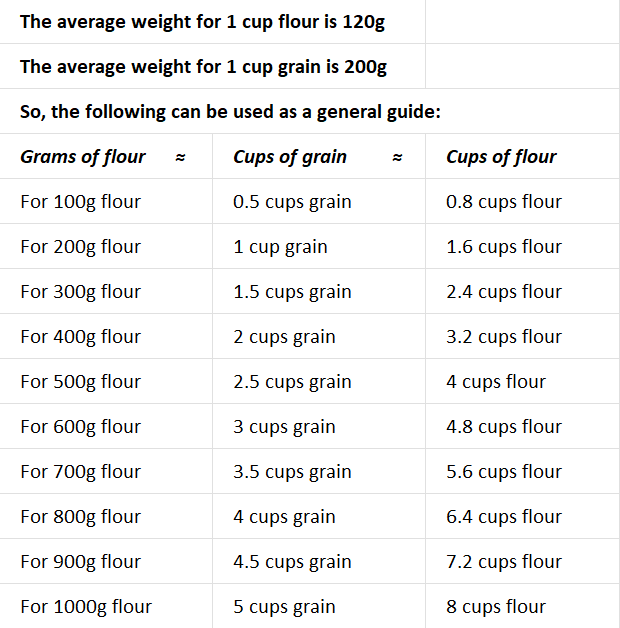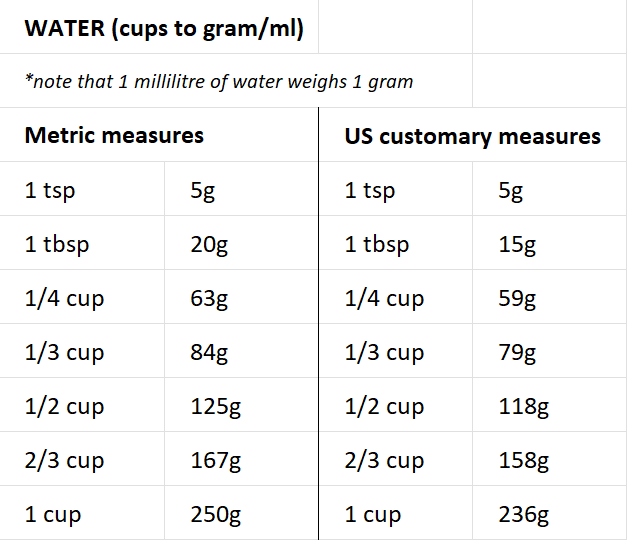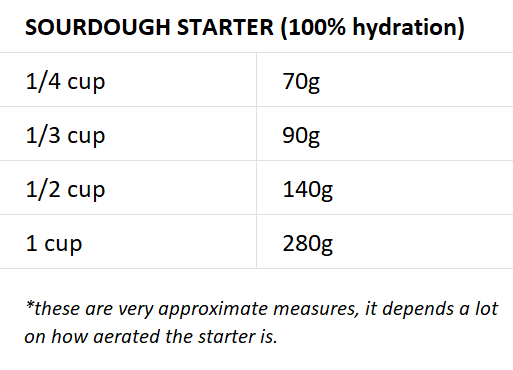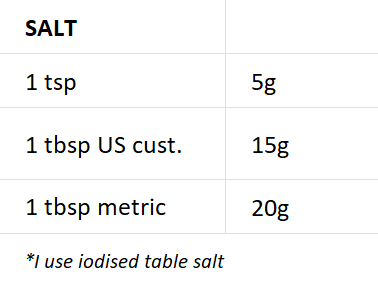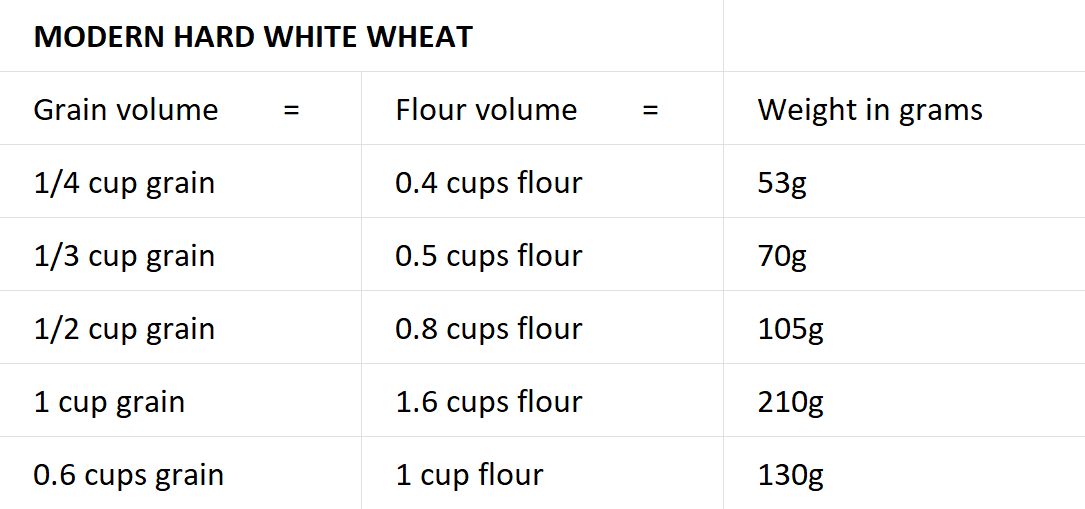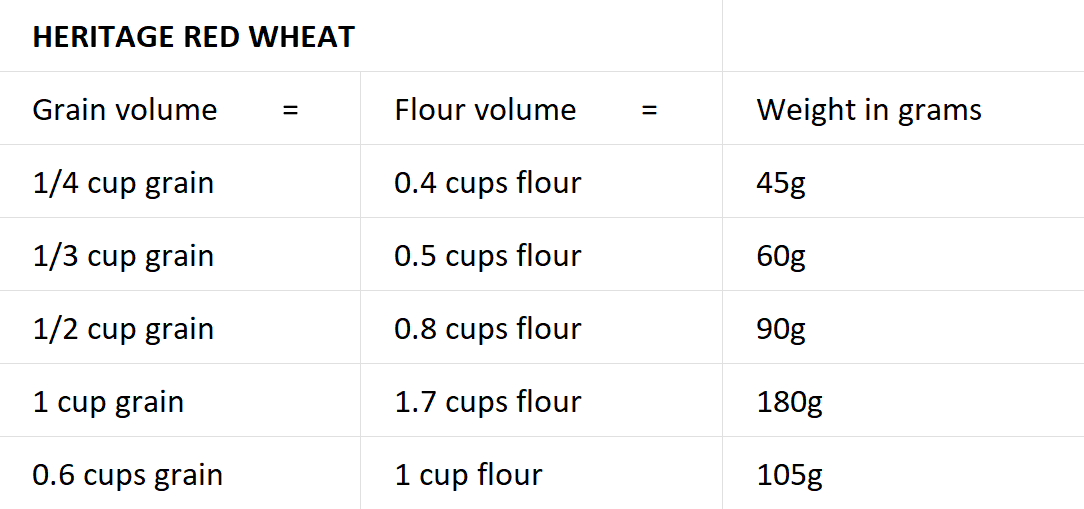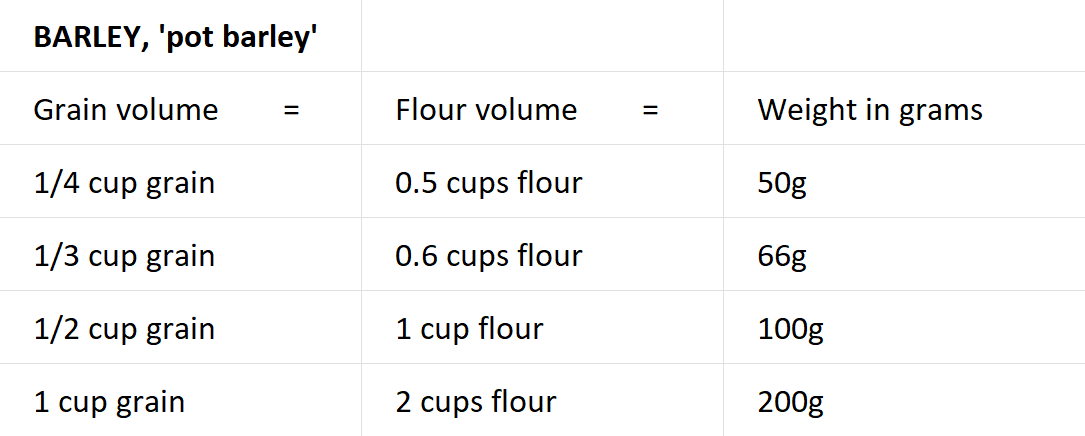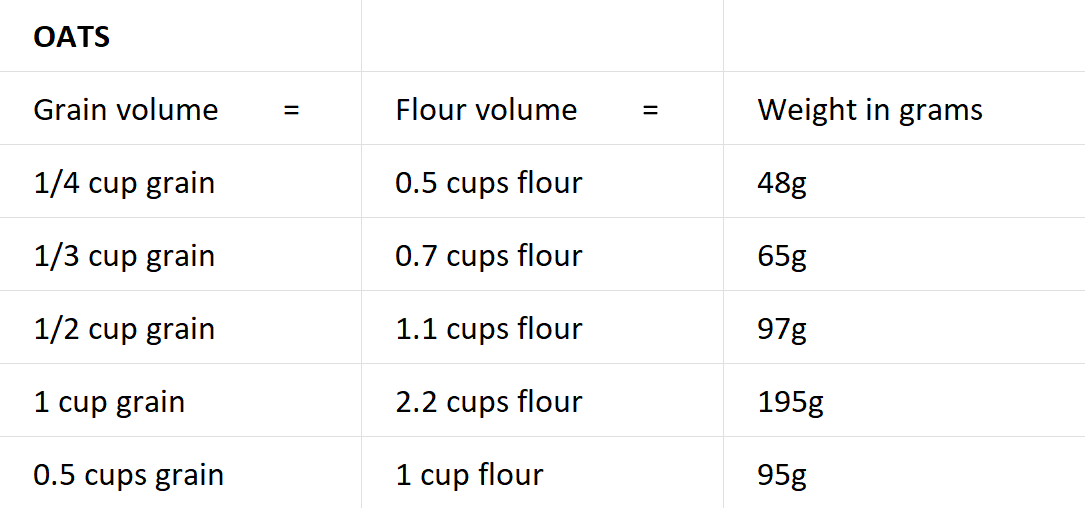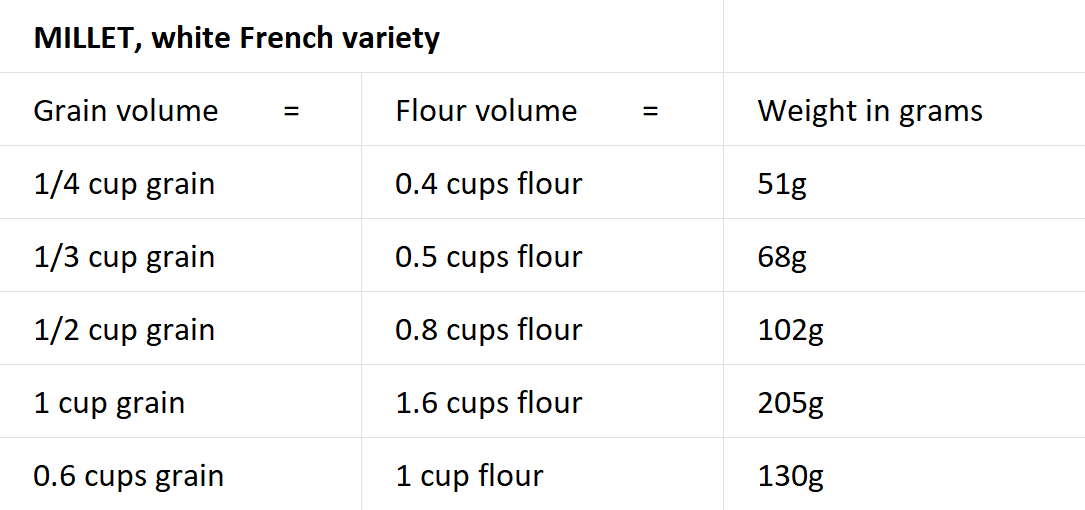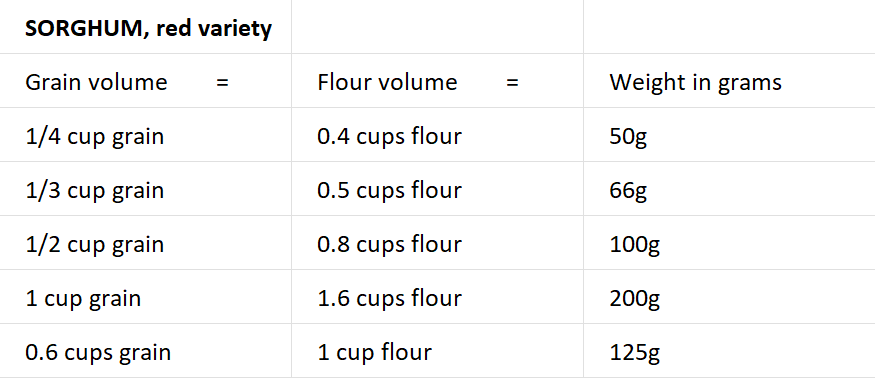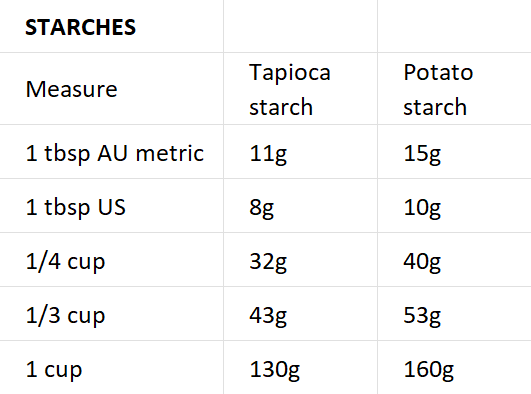GRAIN to FLOUR to GRAMS CONVERSION TABLES FOR
HOME MILLERS & BAKERS
Link to printable PDF charts:
$6 AUD ($3.99 USD at time of writing) for the full set of three charts. Your purchase helps me to fund this website and the time spent making YouTube videos and other free resources. Thanks for your support!
Hello fellow home bakers!
I created the following tables as a resource to help me convert my whole grain bread recipes from grams to approximate volume measures, not only for flour, but for whole grains too! These tables contain grain-flour-grams conversions for a number of commonly used whole grains, as well as a number of gluten free grains and other commonly used ingredients in my bread recipes.
Years ago I shared my first sourdough bread recipes online using simple cup measures, then I switched to weighing my ingredients so that I could talk the language of pro-bakers who love (and need) their scalable recipe formulas. But I know that many of you prefer to have both options available in the recipes I share, so here we are. This resource was made for you and me :)
Don’t get me wrong, using a scale is the most accurate way to approach any bread recipe, and it does reduce washing up (no cups or spoons to wash!), but I’ve found over the years that 100% whole grain flour recipes are not always reliable anyway, given so much local, varietal and seasonal variation in whole grain and flours, so I think it’s ok to embrace a little inaccuracy in your baking if you prefer volume measures, since we often need to make adjustments anyway. If the mere thought of that stresses you out, make sure you visit this page and listen to the talk I give there.
My very first YouTube video was a very easy and successful sourdough bread recipe made using cups of flour and approximate liquid measurement? It can be done.
And since dedicating myself to 100% whole grain baking in 2018, I recreated that first video here if you’d like to see the whole grain flour version. It still works :)
Why is this grams versus cups topic so hotly debated?
People are different and enjoy different styles of baking. Some people prefer weight measurement and believe all home bakers around the world should ‘get with the program’ and use a scale. There is merit in this approach, a scale does have its advantages. But on the other hand, some people prefer a more relaxed approach and find the use of cup measures accurate enough for their baking needs. Some people don’t have a scale, or don’t want one, and I think home bakers should be encouraged to enjoy baking bread using cup measures if they want to. Personally, for my shared videos and recipes I use weight measures (and can now more easily provide the cup amounts too), but at home, when nobody cares or is watching, I use cups. And now I can measure the cups of whole grain and put them straight into my mill! My bread turns out great either way. Experience is the magic ingredient that teaches you to make great bread, and the route through which you gain that experience is up to you. I hope this resource makes it a little easier for some of you.
This is by no means an exact science.
Just be really clear, measuring flour and grain with cups can be highly variable! As a result of variations in flour volume and measuring technique, even though I have provided exact gram amounts in the tables, the measures provided are approximate. The gram amounts I’ve provided are just what my scales told me using the grain and flour I have, with my measuring technique. Your measures will vary!
To achieve the most accurate volume measures using this chart with store bought flour, aerate or ’fluff up’ the flour with a spoon before measuring. This will help bring the flour closer to its original freshly milled volume state. I use the ‘fluff, scoop and level’ method for measuring the flours for this chart. The whole grains were scooped or poured into the cup, then levelled with the back of a knife.
Australian Metric cups were used for all the measures.
Note that metric cups are slightly larger than USA customary or imperial cups, so if you are baking with US cups, be a little generous in your measures. See the ‘water’ table in the Quick Guide section for an idea of the difference between AU Metric and USA cups (it’s minimal).
Looking for places to buy whole grains for home milling and baking in Australia? This page has a comprehensive list.
Thinking of purchasing a grain mill for the freshest flour at home? I highly recommend the Mockmill range, which are available worldwide here.
Home Miller and Baker Quick Guides
Gluten Grains (wheat etc.)
Non-gluten Grains
Gel Binders and Starches
Linseed is the same as flax seed. We call it linseed in Australia :)
Copyright © Elly’s Everyday 2023



